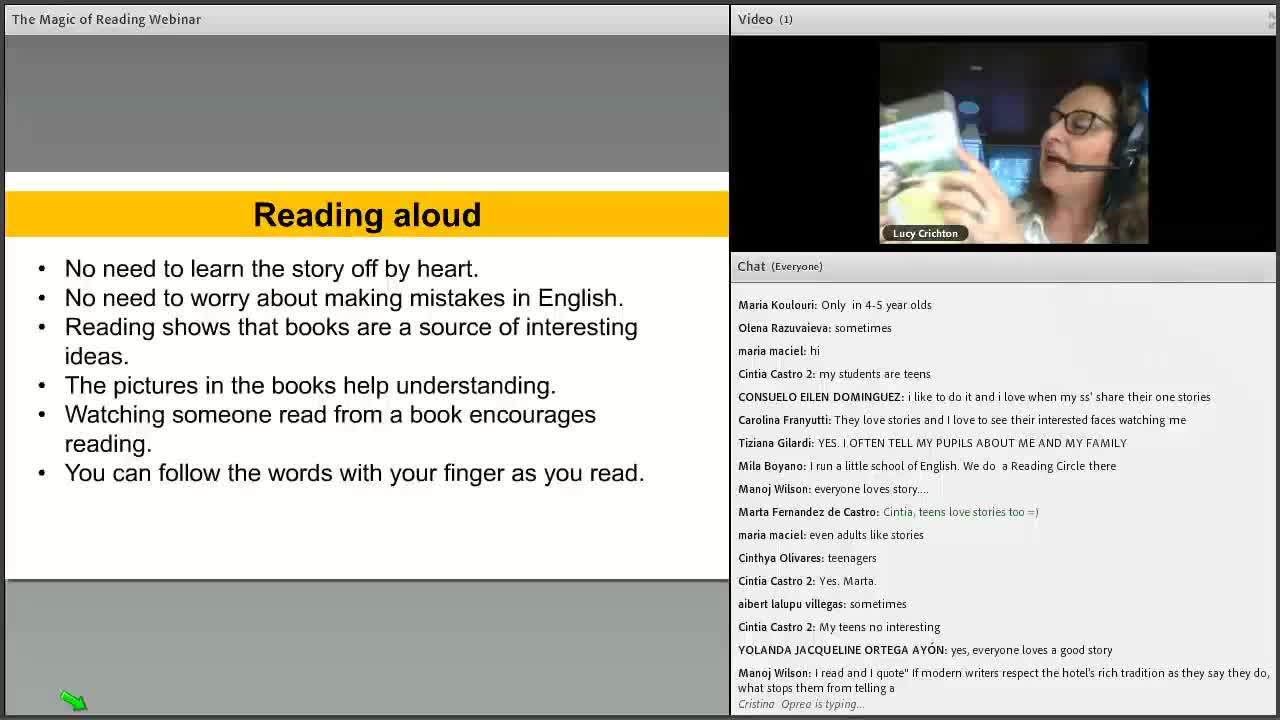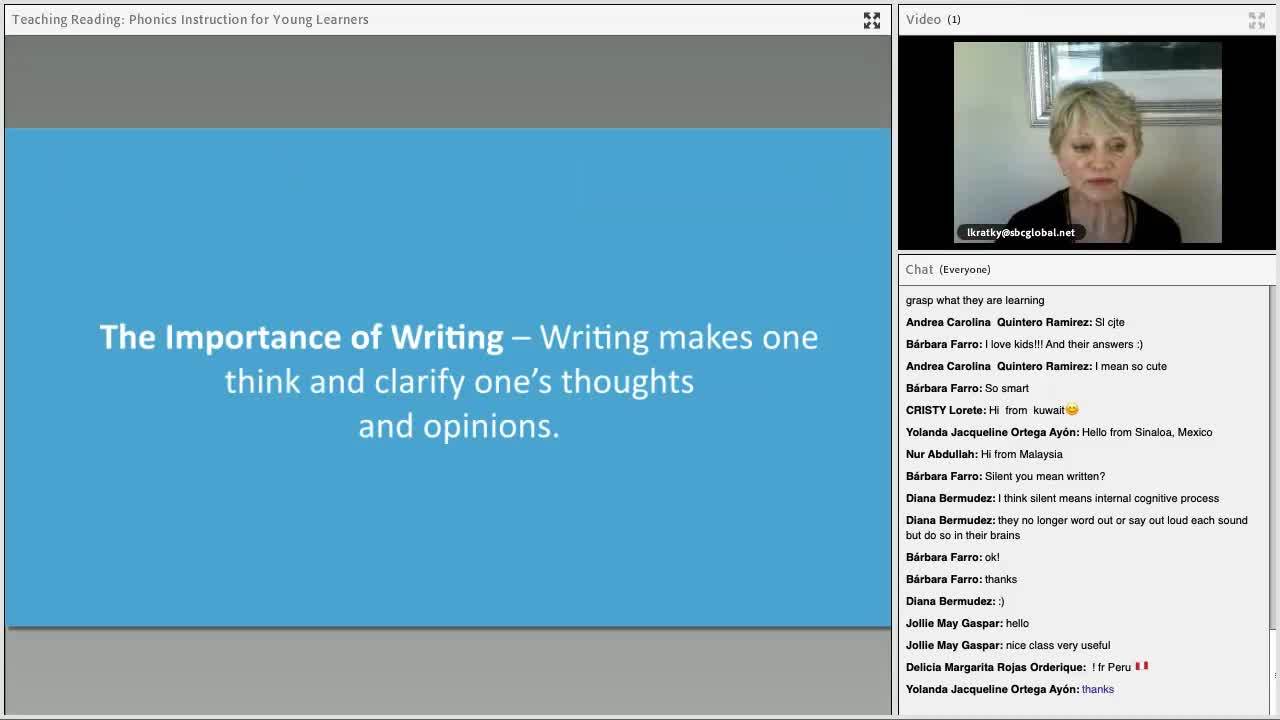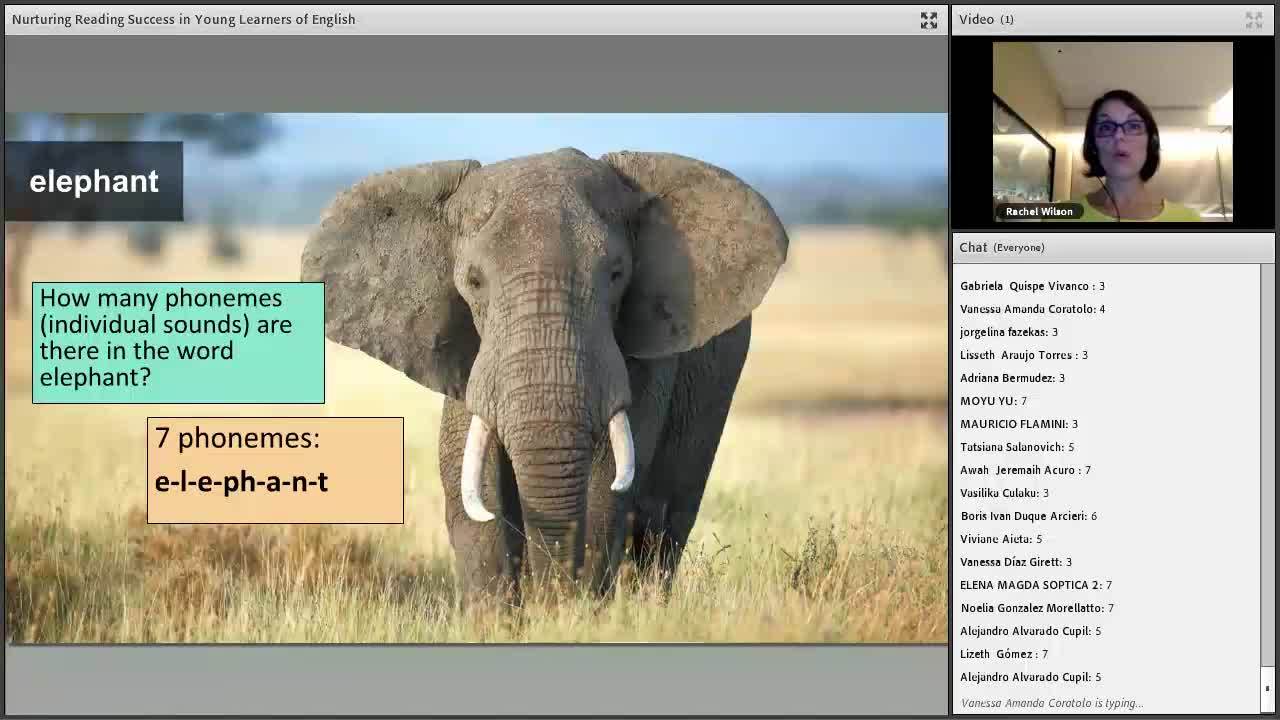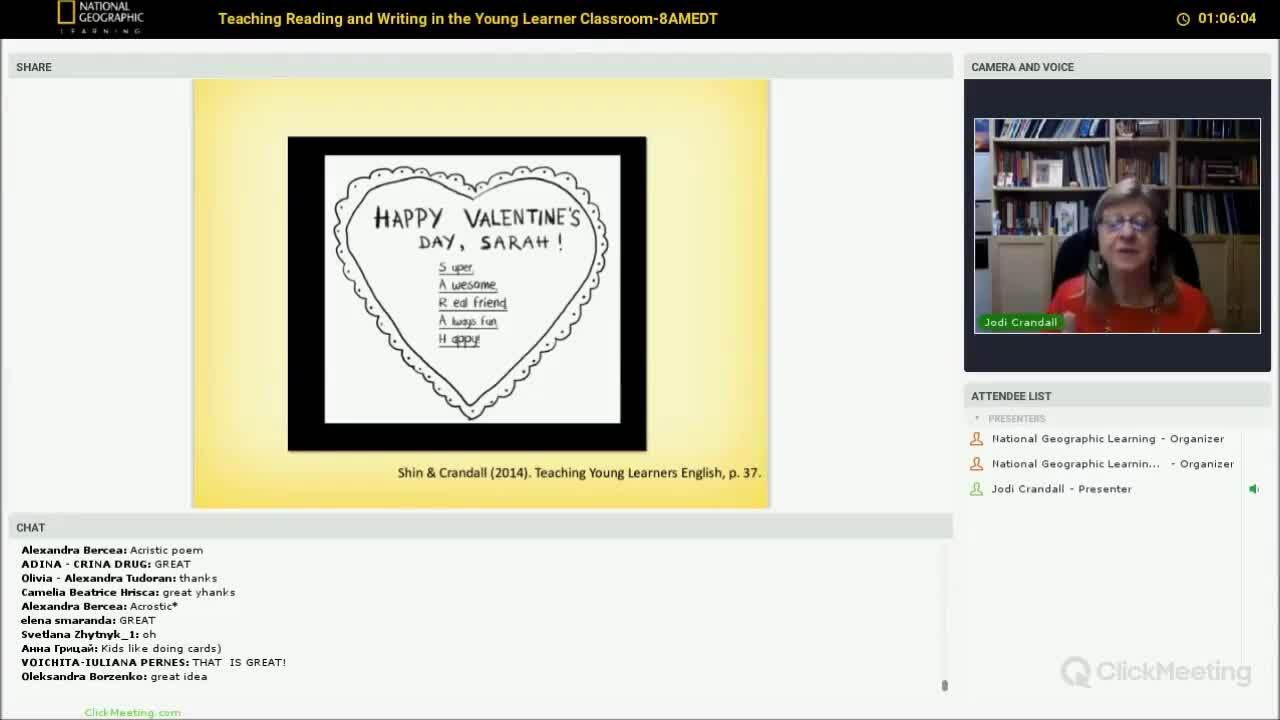Welcome to this webinar playlist by National Geographic Learning, featuring content from some of our expert authors and content developers. In this course, you will watch several webinars on a particular topic and fill in several worksheets with your thoughts and ideas. As a result, you should learn a number of new things that you can implement in your classes, to help your students succeed in ever-better ways in English.
View the full playlist on YouTube.
Reading and Literacy for Young Learners
One of the skillsets that students need to be explicitly taught is reading and literacy skills. While speaking is something that children tend to pick up more naturally (especially their first language), reading and literacy skills are essentially a human technology. People do not automatically learn to read and write; in fact, there are literally thousands of human languages that use a written form. For example, I am from New Zealand. The native people of New Zealand (the Maori) didn’t have what most would call a written form of their language until British settlers arrived in New Zealand and developed a written form so that they could communicate in more ways with the Maori people.
Despite having no traditional writing system, the Maori (and other cultures like them) did make use of stories. Stories are one of the oldest forms of human communication. They are also excellent for developing pre-reading and reading skills in our language learning students. In this session, author Lucy Crichton describes how to use stories to great effect in the classroom, and how to gain maximum return on your time and effort invested in stories. Before, while and after you watch, fill in the sections of the worksheet to help you pick out key points and ideas for your own classes.
The Magic of Reading – Using Stories to Promote Literacy and Learning
Presented by Lucy Crichton, co-author of Reading Anthology books for Look
Watch the recording
Download the webinar worksheet

When I recently watched Lucy’s webinar, I was reminded of some of the techniques used by actors, and also those used by comedians. I personally think some comedians are great examples of storytellers that we can steal ideas from for our classes.
When students start reaching the age that the local schooling system decides that it is “time for them to learn to read”, the students start to learn a range of new skills in both public and private schools. One of the skillsets we teach young learners for reading is phonics. Phonics consists of many different smaller skills, and in this talk, Dr. Lada Kratky covers many of these ideas and some ways to teach them. Again, fill in the attached worksheet to help support your learning from this webinar.
Teaching Reading: Phonics Instruction for Young Learners
Presented by Dr. Lada Kratky, co-author of Reach Higher
Download the webinar worksheet

The following diagram is one that I have found about phonics activities. I have tried to find an original source of this image but haven’t been able to do so. However, I know it has been referred to by both English language teachers (for EFL students) as well as speech therapists (for 1st-language English users). There are similar images available but the reason I like this one is that it refers do different activities as well as the skills. What activities from this image could you do with your classes? Do you know of similar images? If so, share them in the comments below!

During her session, Lada also mentioned high-frequency words. There are a few of these lists available, including the Dolch list and the Fry list. Personally, I like the Fry list. Be aware that, with the Fry list, a guideline for learning is that 1st-language English users typically learn the first 100 words by the end of Grade 1 (7 y.o.), and the first 200 by the end of Grade 2 (8 y.o.), but slightly faster or slower paces are still very acceptable.
Once students are learning phonics and sight words, they can mechanically “read” a sentence or a passage, but we also have to look at how students gain meaning from their reading. There are many ways to approach this, and Rachel Wilson, an author involved in the Look program, has some great ideas she shares in her webinar on reading for young learners. Take a look at what she says, and once again complete the worksheet before, during and after her presentation.
Nurturing Reading Success in Young Learners of English
Presented by Rachel Wilson, co-author of Look
Download the webinar worksheet

Because they are both in the areas of literacy, teaching reading is intimately linked with teaching writing. In Rachel’s session, we heard the quote that “reading can be thought of as preparation for writing, and writing as producing something to be read.” This comes from a book by Our World authors, Dr. Joan Kang Shin and Dr. Jodi Crandall. Who better, then, to learn more about this than one of those authors! In this session, Jodi talks about the reading/writing relationship in more detail. She offers many suggestions to help students write, as well as reading the writing that is produced. Jodi has so many ideas in this webinar that you will definitely need the worksheet below to help you keep track of them all!
Teaching Reading and Writing in the Young Learner Classroom
Dr. Jodi Crandall, series editor Our World
Download the webinar worksheet

Four great presentations from four very knowledgeable authors; I hope you learned as much from them as I did! Please share some of your ideas, thoughts, inspirations and other comments in the section below, and let’s find even more ways together to help our young learner excel in reading and literacy.



It’ really help me to have class i Young Learners. Thanks